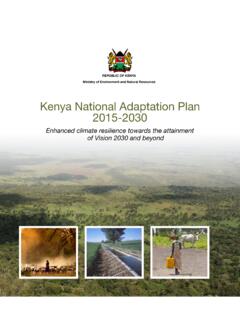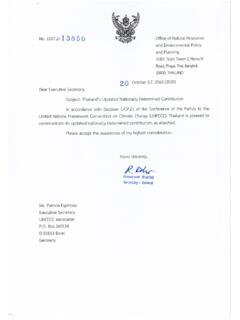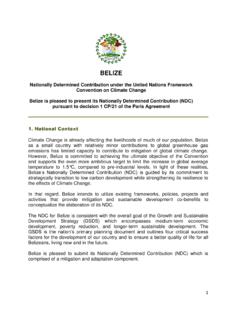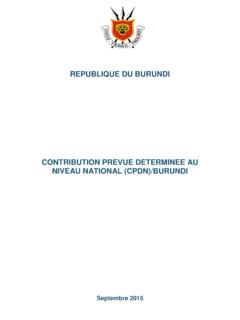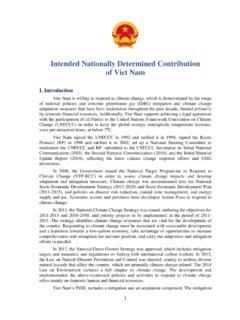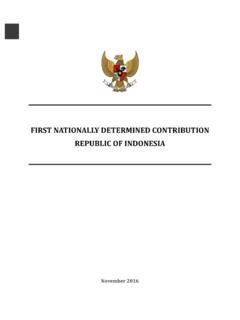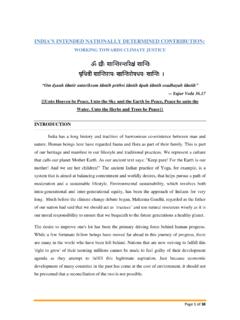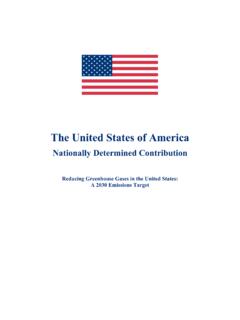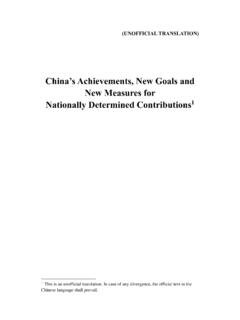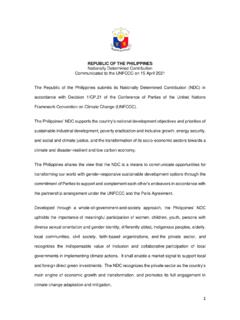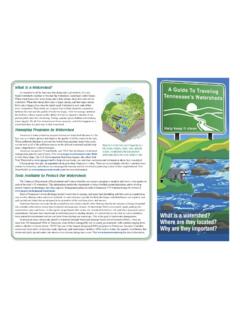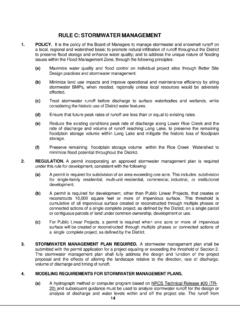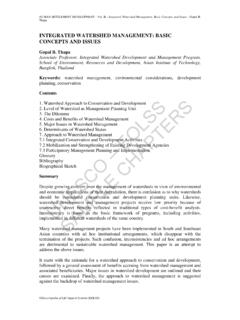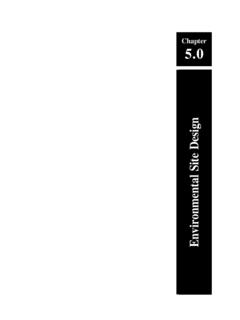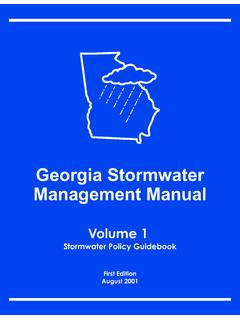Transcription of Jamaica’s Updated Nationally Determined Contribution
1 June 2020 Update of Nationally Determined Contribution (NDC) of Jamaica Page | 1 Cover pictures courtesy of: The Forestry Department and Wigton Wind Farm Jamaica Limited Top The Cockpit Country, Jamaica Bottom Wind turbines of the completed three phased Wigton Windfarm Project Update of Nationally Determined Contribution (NDC) of Jamaica Page | 2 Summary Jamaica remains committed to making its Contribution as the world moves to address the challenge of climate change. In line with requirements of the Paris Agreement, the country has increased its ambition of the mitigation component of its Nationally Determined Contribution (NDC).
2 This increase in ambition comprises both a broadening of the NDC s sectoral scope and the delivery of greater emission reductions. Jamaica has broadened its sectoral scope and taken steps to move towards an economy-wide target and will bring emissions from the land use change and forestry sector within its NDC for the first time. This reflects the importance of the forestry sector to Jamaica, which accounts for more than half of the island s total land use, and the important commitments that the country has made to preserve and enhance these stocks.
3 The country has identified opportunities to deepen the emission reductions it delivers in the energy sector. These opportunities are part of an increasingly comprehensive approach to decarbonising this sector that covers both the electricity generation, as well as energy use sub-sectors. The result of these positive changes is that Jamaica s latest NDC will be significantly more ambitious. By 2030, it foresees emission reductions covering these two sectors of between per cent (unconditional) and per cent (conditional) relative to a business-as-usual scenario (which takes into account policies in place as of 2005).
4 This implies that emissions in these sectors would be to MtCO2e lower than they otherwise be, compared with a range of to MtCO2e in its previous NDC. A crucial feature of Jamaica s NDC is that it is based on the analytical work of the policies and grounded ambitious commitments that the country has already made. This ensures that the commitments are robust, benefiting from both political support and implementation plans already in place. This approach is crucial in both ensuring the legitimacy of Jamaica s NDC to domestic constituents and in enhancing the credibility of the international process governing emission reductions.
5 As a small island developing state, Jamaica is acutely aware of how the physical risks of climate change threaten its development and the wellbeing and economic security of its citizens. Adaptation represents an important cross-cutting element for all sectors. Within the energy and land-use sectors, the policies in place to reduce emissions will also provide adaptation co-benefits to Jamaica and therefore enhance the country s resilience. For example, a shift to cleaner energy in the energy sector will reduce local air pollution and therefore benefit human health.
6 This problem will otherwise be more severe as temperatures increase. Similarly, the preservation of the forest cover will improve water, soil and air quality, and reduce soil erosion. All relevant GHG gases were accounted for using the IPCC 2006 Guidelines for the National Greenhouse Gas Inventories and IPCC 2013 Wetlands Supplement. Jamaica has opted to update its NDC in the information to facilitate clarity, transparency and understanding (ICTU) guidance template made available following discussions that framed the Katowice Rulebook at the twenty-fourth meeting of the Conference of Parties (COP 24).
7 Moving forward, Jamaica is committed to delivering on this NDC in keeping with its commitments as a Party to the United Nations Framework Convention on Climate Change and the Paris Agreement. Jamaica welcomes the support of the international community as the country pursues these ambitious goals to consolidate its efforts to delink economic growth and development from emissions growth, while also making itself more climate-resilient. Update of Nationally Determined Contribution (NDC) of Jamaica Page | 3 UPDATE OF Nationally Determined Contribution (NDC) OF JAMAICA (BASED ON THE ICTU GUIDANCE) 1.
8 Quantified information on the reference point, including, as appropriate, a base year a Reference year(s), base year(s), reference period(s) or other starting point(s) The target is not expressed relative to a base year. The reference year for the target is 2030 and the target is expressed relative to business-as-usual emissions in this year. Business-as-usual emissions have been calculated based on policies in place in 2005. b. Quantifiable information on the reference indicators, their values in the reference year(s), base year(s), reference period(s) or other starting point(s), and, as applicable, in the target year Business-as-usual emissions in the energy sector in 2030: Business-as-usual emissions related to land use change and forestry sector in 2030: Total business-as-usual emissions in 2030 of sectors in the NDC: c.
9 For strategies, plans and actions referred to in Article 4, paragraph 6, of the Paris Agreement, or polices and measures as components of Nationally Determined contributions where paragraph 1(b) above is not applicable, Parties to provide other relevant information Jamaica will undertake a range of actions concerning the sectors not covered by its quantitative commitments. These include the following: Agriculture: The Climate Change Policy Framework for Jamaica (2015) identifies the agriculture sector as a critical sector of importance for both mitigation and adaptation.
10 Strategic aims include facilitating the use of water (and hence energy) efficient agricultural methods, improved food storage systems, and diversifying food production techniques including the expansion of agroforestry and aquaculture. Consistent with these strategic priorities, several important ongoing important projects in the sector are contributing to both GHG emissions reductions, carbon sequestration and enhanced climate resilience. For example, the Integrated management of the Yallahs and Hope River watershed management Areas (Yallahs-Hope) Project, aims to improve the conservation and management of biodiversity and the provision of ecosystem services within the region; the watersheds accounts for around 7% of the island s farmlands.
